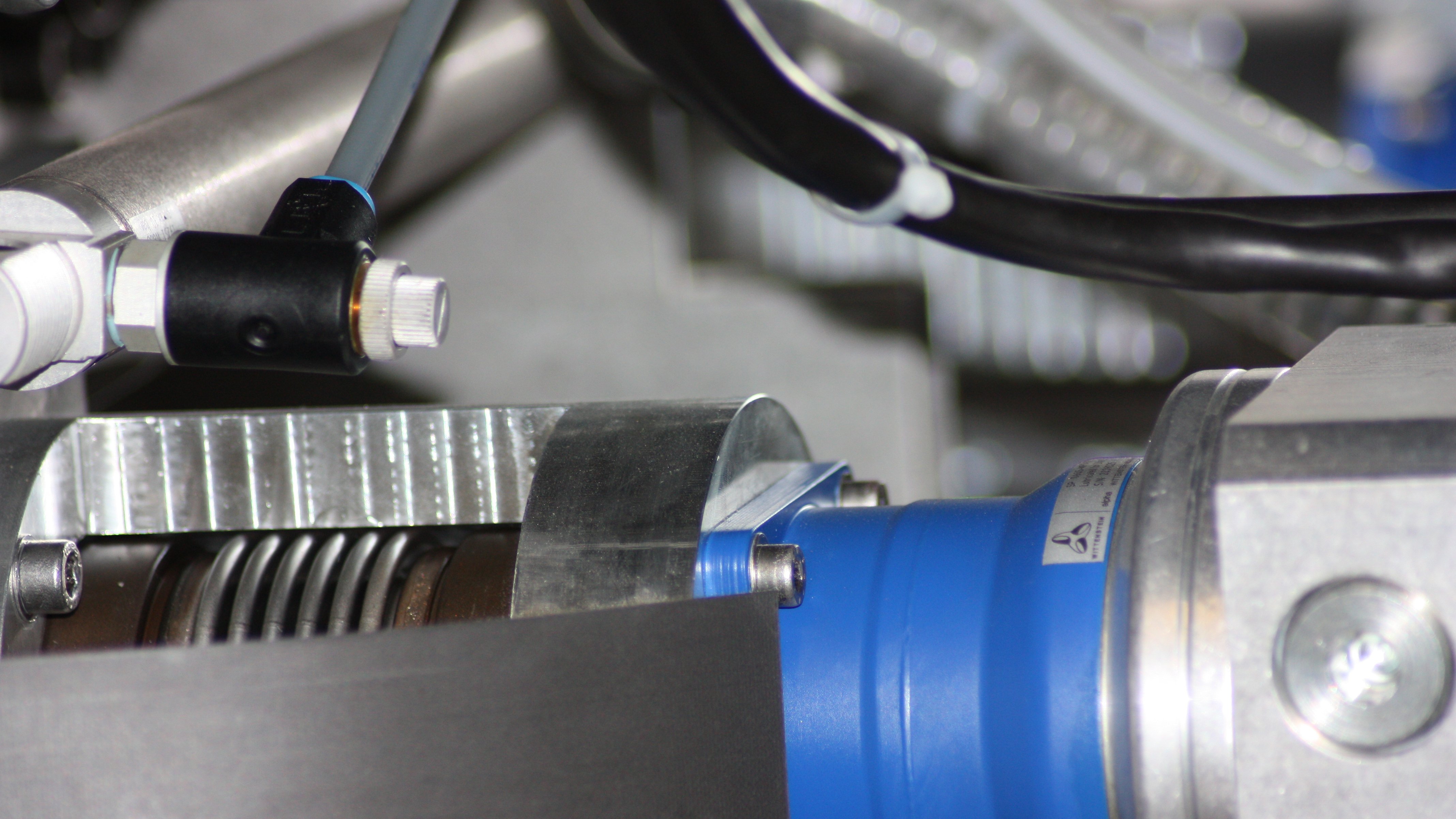Integration
The Newton TX is easier to integrate with other parts of a packaging and conveyor process. “The Newton TX comes with Allen-Bradley® PanelView™ Plus control screen, which means it can control all aspects of dosing and conveyor systems. The operator can therefore operate the dosing and weighing functions from the packaging machine.” Van den Hurk continues ”UVA Packaging uses various Allen-Bradley components from Rockwell Automation in the Newton TX, including a ControlLogix L61 PAC, numerous Kinetix® 6000 Servo drives, PowerFlex® frequency regulators and a touch screen. These components form an integrated solution.
Servo Drives
Important components within the Newton TX are the four Kinetix servo drives,” he explains: “These drives mean our machine’s performance is not compromised in terms of speed. We have therefore succeeded in building a very well engineered machine with a fully adjustable film belt. The machine can process Polyethylene (PE), heat-sealable film and laminated film. The spindle, around which the film is wound, is automatically unrolled in a process where the key is to control the tension of the film... the film must always be tightly wound. The film is unrolled and stored on several spindles and by varying the distances between these spindles, the film can be kept under tension at all times. This is important for both speed and quality.”
Film Belt
“The drivers carry out the primary process – making the bags,” he continues. “They also convey the film by pulling on it, allowing for maximum acceleration and deceleration. Real-time slip compensation can also be implemented. Intelligence within the controller determines the slip using the positions of the film detected by optical sensors. By making a comparison and calculation, the controller can subsequently establish if (and how much) slip has taken place. If there is slip, which can easily run into metres per second, it is corrected in real time by the servo drives. The slip also varies significantly by film type, as each has its own quality, friction and friction coefficient.
Van den Hurk continues: “After the shoulder mould, the film is shaped into the desired bag style. The machine can process two styles: pillow bag and doy-style. The zipper is added in the shoulder mould; either a push strip or ‘press to close’. There are a number of filling systems: multi-head weighers, volume-dosage systems, linear weighers and screw-dosage systems. All these types of weighing systems can be connected to our machine.”

